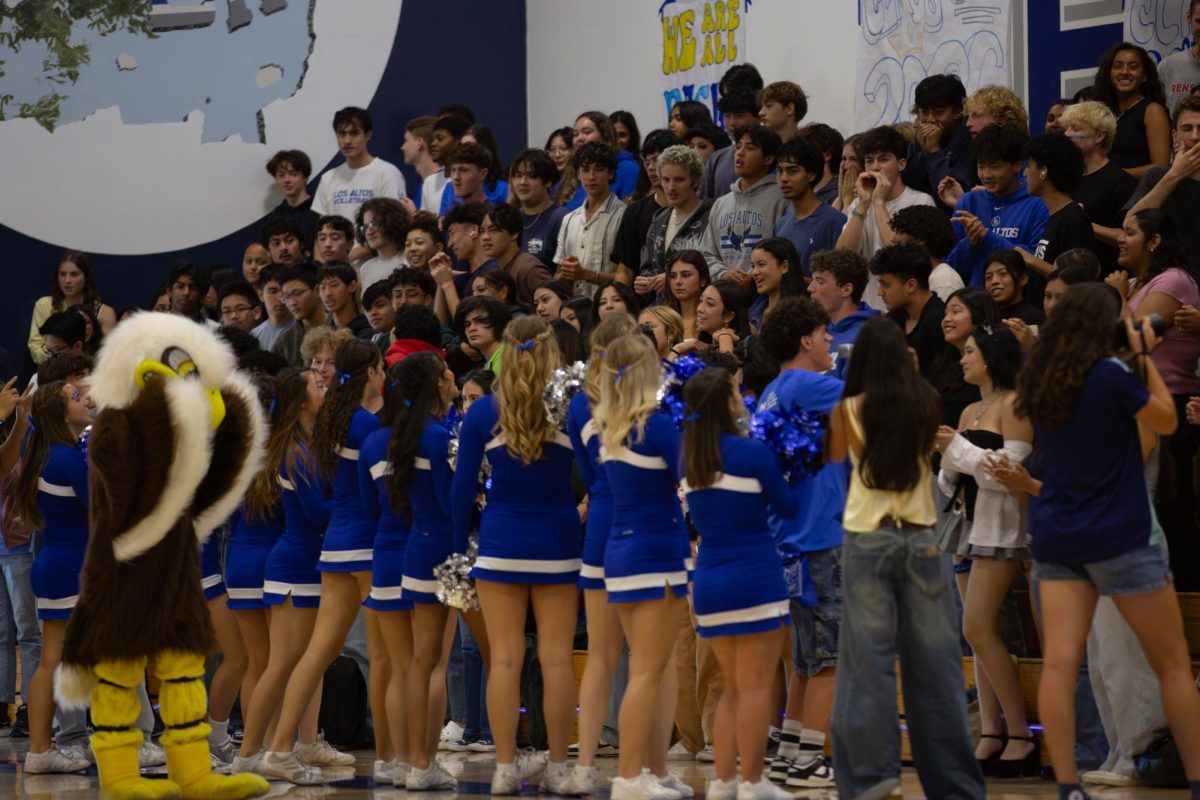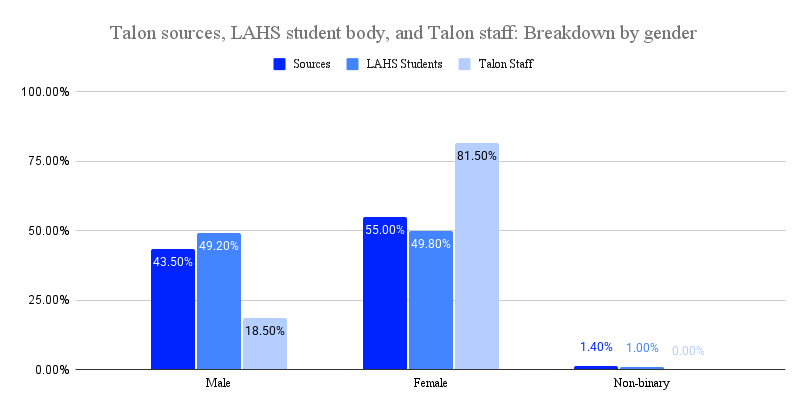Intro:
The guiding principle of The Talon is to give our school community a voice. This is our fourth time we’ve looked over our source demographics, and yet again, we found that we’ve failed to accurately represent our student body. This issue, we’re committing to tangible action to address our biggest shortfall: our continued underrepresentation of Latino sources.
Race:
Last year, we said we’d improve the disparity between the race of our sources and the student community. Although we didn’t do worse, we didn’t improve: 27.4 percent of Los Altos High School is Latino, but only 8.4 percent of The Talon’s sources identified as Latino. This is virtually unchanged from last year — when we left unspecified solutions to this problem. We won’t leave things vague again.
Next semester, we’re switching up our beat coverage of identity clubs: We’ll have writers specifically assigned to clubs like the Latino Student Union (LSU). That way, we hope to cover more than just what the clubs are doing — we’ll cover the community they represent. Beyond that, we commit to publishing at least one story from the LSU beat per issue.
Covering the Latino community more doesn’t mean reducing the voices of other groups on campus — it means making space alongside them. Every year we’ve done a diversity audit, we’ve found that stories affecting the Latino community were underrepresented. Hopefully, we can end that streak.
We also need to do a better job covering the Black community. This semester, only one of our sources identified as Black. This needs to change. Next semester, we’ll cover the history of BSU — and we’ll directly work with the club to cover the stories affecting the Black community.
Gender:
This semester, 59.7 percent of all interview subjects were female, 38.6 percent were male, and 1.7 percent were non-binary. This is roughly the same as last year. This year, we decided to look deeper, comparing LAHS student and staff sources with their demographics.
We found that our student sources were skewed — with female sources making up a significant majority. The gender ratio of non-sport adult sources matched the ratio for paid staff at LAHS. Three quarters of our adult sources in sports were male — but as a significant majority of both girls and boys coaches are male, this is expected. 2.6 percent of student sources were non-binary, but as government surveys don’t have non-binary as an option, we don’t know the campus-wide statistics.
In terms of gender, our biggest area for growth is sourcing students. The lack of parity comes from a number of sources, including the underrepresentation of male Talon reporters — who make up less than one-fifth of our staff. As we move forward, we’ll work towards encouraging parity in both our sources and staff.
Grade Level:
62.8 percent of our sources were seniors, 26.2 percent were juniors, 7.7 percent were sophomores, and 3.3 percent were freshmen. The low numbers of underclassmen are expected; The Talon tends to interview leading roles on campus, most of which are held by juniors and seniors.
Additionally, sources for our Homecoming Court videos were almost all seniors and staff. Last year, we saw higher numbers of underclassmen in the second semester, as we integrated Journalism One students.
What’s next:
The Talon needs to represent the student community effectively. That’s why we’re doing this audit — to find blind spots in our coverage. In the long term, besides covering stories and communities we’ve missed previously, we’d like to also increase the number of Latino writers and editors on our staff. When less than 4 percent of our staff identify as Latino, it’s harder to know all the issues affecting our whole community.
We know The Talon is an elective course, and not everyone has room in their schedules for it. But we promise joining us will be worth your while.
We encourage everyone to join us: No matter your race, gender, or grade, we want The Talon to feel like your paper.
We would love to have you in our newsroom.








